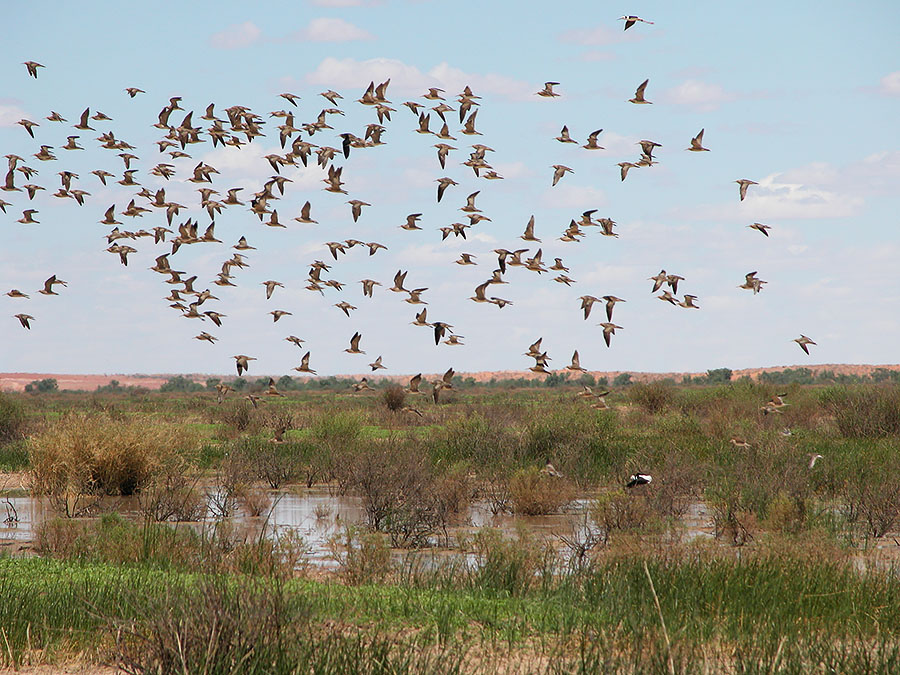|
|
Movement (management)The high mobility of waterbirds, complexity of movement possibilities and inadequate knowledge of movement patterns present considerable challenges for waterbird researchers and managers. Quick facts
An understanding of waterbird movements is essential for their management and monitoring. The decline, departure or increase of particular species, or of the majority of waterbirds, in an area may not be solely related to local habitat conditions but due to changing bird movements as a result of habitat becoming available elsewhere. Since waterbirds and shorebirds are highly mobile it is important that managers consider their site in the context of other sites along movement pathways. Activities at a site should be planned to ensure that the right habitat is available for waterbirds at the times when they are likely to be passing through the site. Cooperation between catchments, States and in some cases between countries may be necessary to effectively manage a population of waterbirds. Due to the variable climate and weather in Australia the protection and wise use of a network of wetlands may be necessary to ensure that waterbirds continue to have the choices they need. A survey may reveal a wetland to be seasonally dry, or in a run of dry years, or may be carried out at a time when waterbirds were low in number. At other times of the year, or during different years, the wetland may have significant waterbird numbers as that site plays its part in the 'network'. Shorebird migrationManagers of wetlands inhabited by migratory shorebirds have special obligations to meet the requirements of the Environment Protection and Biodiversity Conservation Act 1999 as well as any other relevant legislation, conventions and agreements. Management of migratory species presents a challenge for monitoring of trends in numbers at a site because results are of limited value unless they can be placed in the context of knowledge of trends at the whole-of-population scale, which may mean across multiple countries along a flyway. Some migratory species/individuals are highly faithful to a site, making conservation and management easier to plan. Others may be less so and may occupy wetland sites (especially inland wetlands, which are often dry) on a less predictable basis. Wetland sites that support migratory shorebirds provide a great opportunity for local communities, schools and other stakeholders to ‘connect’ with ‘sister sites’ in other countries where such species – ideally, where tracked individual birds – occur during the annual migration cycle. As well as raising awareness of the amazing migratory story and the fragility of survival of migratory species, such links can engage communities across Asia Pacific in exchange of information and other cooperative activities. Additional informationLast updated: 3 July 2015 This page should be cited as: Department of Environment, Science and Innovation, Queensland (2015) Movement (management), WetlandInfo website, accessed 8 May 2025. Available at: https://wetlandinfo.des.qld.gov.au/wetlands/management/bird-management/other-waterbirds/movement.html |

 — Department of the Environment, Tourism, Science and Innovation
— Department of the Environment, Tourism, Science and Innovation


